Qingyan Ancient Town
Qingyan Ancient Town, one of the four ancient towns in Guizhou, is located in the southern suburb of Guiyang City. It was built in Hongwu ten years (1378) of Ming Dynasty and was formerly a military fortress. In the town, the ancient buildings of Ming and Qing Dynasties, with exquisite design and craftsmanship, are interlaced and densely covered with temples, pavilions, painted pillars, carved beams and cornices. The town is a gathering of people, including Zhou Yujuan, a famous historian, and Zhao Yijing, the first literary champion in Guizhou's history, in the late Qing Dynasty. There are historical relics in the town, such as Qingyan Religious Case Site, Zhao Zhuangyuan Prefecture, Mr. Pinggang's former residence and the Red Army's Long March Operational Command, which shocked China and foreign countries in modern history. Zhou Enlai's father, Deng Yingchao's mother, Li Kenong and other revolutionary predecessors and their families all lived in secret in Qingyan. Qingyan Ancient Town was also one of the schools relocated to the west by Zhejiang University during the Anti-Japanese War.
In September 2005, Qingyan Ancient Town Scenic Spot was announced as the second batch of famous historical and cultural towns in China by the Ministry of Construction and the State Administration of Cultural Relics. In 2013, it was honored as one of the most charming towns in China in the Peak International intangible cultural heritage protection and heritage tourism planning project. In 2010, Qingyan Ancient Town was awarded the honorary title of "Hometown of Chinese Poetry" by the Chinese Poetry Society, and took the lead in becoming the homeland of Chinese poetry. In 2016, it was listed as the first batch of towns with Chinese characteristics by the Ministry of Housing and Construction. On February 25, 2017, it was rated as the national 5A tourist attraction.
Historical evolution
Located in Huaxi District, Guiyang City, Guizhou Province, Qingyan Ancient Town is the first national 5A-level tourist attraction in Guiyang City and one of the second batch of famous historical and cultural towns in China. It has a history of more than 600 years. It has a profound cultural and historical background, and its regional characteristics are quite attractive. Qingyan Ancient Town was built in Hongwu 11th year of Ming Dynasty (1378 AD). It was built because of the garrison troops of Ming Dynasty. It was named after the blue rock. It is a mountain military city evolved from the military city defense. It is known as the "South Gate" of Guiyang.
In the early Ming Dynasty, Tunpu was built in Qingyan Ancient Town. During the four to seven years of Tianqi (1624-1627), Ban Lingui, the Buyi Tusi, built the Qingyan Tucheng, led 72 villages and controlled the Bafan Twelve Division. Qingyan Ancient Town, as a military fortress and occupied a special geographical position, after hundreds of years of construction and expansion, Tuchengyuan was replaced by stone walls and streets were paved with stone. The walls around the city are built on cliffs with huge stones. There are four gates in the east, west, South and north. Within the city, there are nearly 100 cultural relics and scenic spots in the area of 3 square kilometers.
In order to control the southwest border area, the Central Dynasty set up Guizhou Wei Commander in Hongwu in 1373 to control Sichuan, Yunnan, Hunan and Guiyidao. Qingyan is located in the middle of the main post road of Guangxi's entrance to Guiyang. It sets up a "shop" to deliver official documents and a "pond" to convey military information. It garrisons under the Shuangshi Peak to build a village, historically known as "Qingyan Tun".
In the fourteenth year of Hongwu (1381 A.D.), Zhu Yuanzhang sent 300,000 troops on an expedition to Yunnan and Guizhou. After entering the hinterland of central Guizhou, a large number of troops stationed in tuntian. The "Qingyan Tun" gradually developed into a "Qingyan Fort" with both military and civilian stationed.
geographical environment
Located in the southern suburb of Guiyang City, Qingyan Ancient Town is 29 kilometers away. It is the central distribution center of the southern suburb of Huaxi District and the historic and cultural ancient town of Guizhou Province. Located at 106, 37, 106, 44, 26, 17, 26, 23, it is about 10 kilometers long in North and south, 8 kilometers wide in East and west, with a total area of 92.3
The ancient town of Qingyan is situated near the mountains. It is logical that all the walls of the city gates are built with stones.
The climate of Qingyan Ancient Town is a subtropical monsoon climate, with an average annual precipitation of about 1250 mm, a sunshine duration of 2200 hours, an average temperature of 14-15 C. It is suitable for tours throughout the year.
Architectural characteristics
The ancient town of Qingyan has a deep historical background. Climbing up a hillside not too high on the side of the town gives a bird's-eye view of the town. The town is not built on a plane, but on a high and uneven hillside. From a high point of view, the whole structure of the town gives a three-dimensional aesthetic feeling that is difficult to see in other ancient towns. In addition to many temples, there is still a Christian church and a heavenly Church in Qingyan ancient town. Many religions coexist in harmony, forming its unique style.
Elephant trunk wood carving
Elephant trunk woodcarving is very common in Qingyan dwellings. Most of them are used to pick the eaves in front of the house. The eaves need to bear the load. It is undoubtedly a manifestation of strength to carve them into an elephant trunk. The forest pillars of Qingyan dwellings have round and square sections.
There's also a square horn. Round and square columns are called cylinders and square columns, while square angles are called "sesame columns" because their cylinders resemble sesame rods. "Sesame Column" not only has a certain line beauty, but also reflects people's traditional cultural mentality of "more children, more happiness" and "step by step".
Chao men
Most of the dynasty doors are vertical flower doors. Some of them are carefully carved with stone-like structure on the door cover. The appearance is very lifelike. Some people, in front of the Chao Men or the gate, lay blue stone slabs on which carved patterns of bats, ancient money, white fruits, carp, etc., meaning "open doors to see fortune", "open doors to see wealth", "open doors to see children", "more than one year" and "carp jumping the Dragon Gate" and other auspicious images. The exterior decoration of Qingyan dwelling house does not look very luxurious, so it is not particularly eye-catching, which reflects the traditional idea of Qingyan businessmen that "money does not reveal". However, careful observation shows that the decoration of Qingyan folk house is very rich in cultural connotations, such as an ancient book with a chewy head. Wood carvings such as pomegranate, gourd and sunflower on doors, hairpins and couplets not only imply "many sons", but also symbolize "many blessings". "More children and more happiness" is what people dream of. Many large families, front courtyard stores, backyard bedrooms, two rooms as study. Most of the window carvings in the study are ice cracks, which means that only after ten years of cold window, can they reach the top of the world.
Double eaves and mountainous style
The double eaves and mountainous dwellings are the ingenious combination of human body bionics and commercial management. The surface of the dwellings in Qingyan ancient town is not obviously different from other buildings in Ming and Qing Dynasties. The Qingwa stone wall and the ancient vicissitudes of life have their own distinct personality and regional color. Guizhou has always said that "there is no sunshine in three days". Rain can never delay business. Smart businessmen, after repeated accumulation of experience and lessons, have bred typical residential buildings in Qingyan Town. Facade as a commercial residential, it will generally appear taller, only the first eaves can not withstand the wind and rain, not to mention the wind drift, but can not always close the door to do business, plus a double eaves, a good protection of the counter, so no matter how heavy the rain is not afraid. If you look carefully, you will find that the double eaves are like human eyebrows and eyelashes. Eyebrows protect eyelashes, not eyebrows. Eyebrows play a decorative role. This kind of bionic commercial residential building fully reflects the wisdom and innovative spirit of the working people in ancient towns. This kind of multi-functional residential building with human body bionics and unique features is rare even in the whole country.
Waist gate
Qingyan folk houses, more waist doors, their doors and hands are quite knowledgeable. Many people's door-to-door fights are carved into peach-shaped and idealistic shapes. Or tiger head or horn. Some of them are made into gourd-shaped, pomegranate-shaped or auspicious cloud-shaped, ideal-shaped. Commonly known as "hammer" door hairpin, or carved Qian hexagram, Kun hexagram. Or carve peony or sunflower. Door couplet, carved peach, pomegranate, Xiangyun, Ruyi or dragon and Phoenix patterns, known as the "Menlong".
Window carving
Wood carvings such as pomegranate, gourd and sunflower on doors, hairpins and couplets not only imply "many sons", but also symbolize "many blessings". "More children and more happiness" are all people's dreams. Ruyi, Peony, Xiangyun, Dragon and Phoenix are mascots in traditional culture, which have always been popular among the people. Qingyan window carvings are also wonderful. In addition to the common patterns of luck, lu, Shouxi and ploughing, reading, fishing and woodcutting, there are also dragon, phoenix, lion, elephant and other shapes. Many large families have shops in the front yard, bedrooms in the back yard and study rooms in the two compartments. Most of the window carvings in the study are ice cracks, which means that only after ten years of cold window, can they reach the top of the world. Some of the archs in Qingyan dwellings are carved in the shape of bats and some are carved in the shape of butterflies. In the view of Chinese culture, bats and butterflies usually represent "happiness", and butterflies even symbolize "longevity". The homonym of butterflies is "luck" and "Qi". If a person can live to a "fashionable age", it is undoubtedly an old longevity star. Wood pillars in Qingyan folk houses.
Specialty food
Qingyan brine pig foot, also known as the first-ranking foot. To make this stewed pig's feet, we need to raise the hoof of pigs around one year old in the countryside and taste more than ten kinds of valuable Chinese herbs. They should be simmer and simmer carefully, and then add the double flower vinegar of Qingyan specialty to make dipping juice, and import the fat without greasy, the glutinous flavor is moist, sour, hot and delicious. Traditionally, visitors to ancient towns have always enjoyed the foot as quickly as possible and praised it for its delicacy. Nowadays, "Touring Qingyan Ancient Land, Pinqingyan Beautiful Foot" has become a local tourism cultural phenomenon.
Tofu roundness is made by kneading tofu into a ball and then wrapping it with flour. Deep-fry slightly in the oil pan. It's yellow when it comes out. Dip it in Guizhou's special dipping water while it's hot and put it in your mouth. It's crisp and soft, sweet and spicy. It's really delicious.
Breakfast cake porridge, the first choice for breakfast, lotus root flour as the base, put on top of a cooked rice cake, looks very lovely and attractive, usually before eating some melon seeds, sesame, peanuts, preserves and other ingredients, and then use a spoon to crush the rice cake, and in lotus root flour.
Rice tofu is found in almost every town in the southwest of China, but it is different from rice tofu in Qingyan. There is a special kind of rice tofu, which is blended with mung bean powder and various vegetables and has a light green color. This formula is rich in vitamins.
There are many other foods in Qingyan, such as juicy pork elbow, sour soup fish * and so on, and the local are also rich in all kinds of wild potherb. Qingyan also has its own unique and well-known local products. Rose sugar (formerly "sesame candy") is sweet and delicious. It is the centuries-old brand of Pingzheng Kuanjia, which was first produced in 1874. Qingyan Shuanghua vinegar is also a hundred-year-old vinegar, so far not fading, its vinegar is thick and bowl-holding, such as soy sauce black with red, moderate sour taste, long and slightly sweet aftertaste, old Guiyang people are quite fond of it.
Tourism information
traffic
The routes to the ancient town are:
1. The train from No. 32 Yan'an West Road Passenger Terminal in Guiyang City to Qingyan takes about 50 minutes.
2. Huaguoyuan Wetland Park takes a bus from Guiyang to Qingyan (210 express bus) for about one hour.
3. Guiyang Railway Station takes No. 203 to Qingyan.
4. Jinyang Bus Station, take Bus No. 220/223 to Jinzhu Town and transfer to No. 210.
5. Guiyang Longdongbao International Airport has Huaxi and Qingyan Special Line, with the first 10:30 and the last 19:00 in Qingyan.
Admission ticket
On September 20, 2018, the Guizhou Development and Reform Commission issued the Notice on Reducing the Ticket Price of Some Key State-owned Scenic Spots. Since October 1, 2018, the peak season package fare of Qingyan Ancient Town has been reduced from 80 yuan per person to 60 yuan per person.

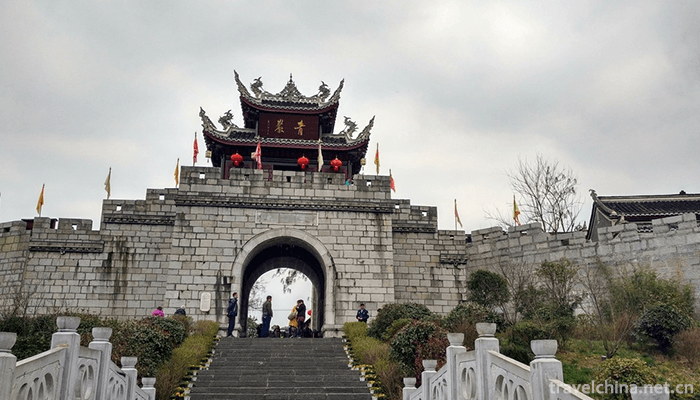
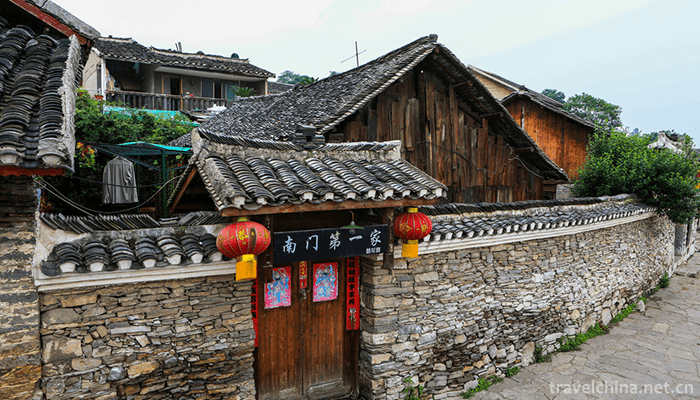
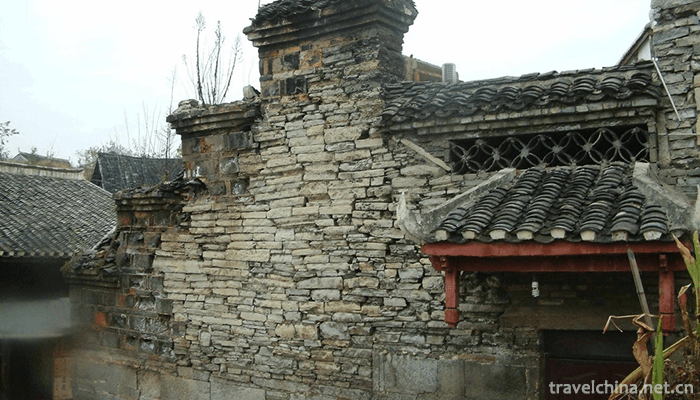

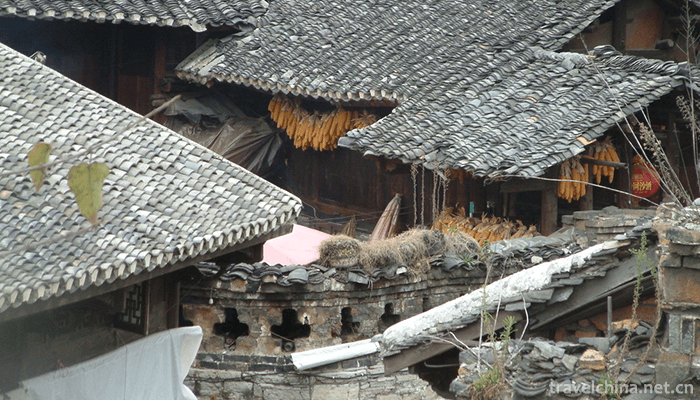
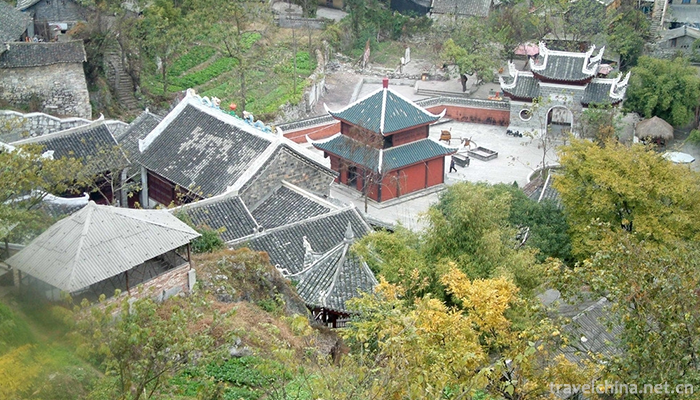

0 Questions
Ask a Question
Your email address will not be published.